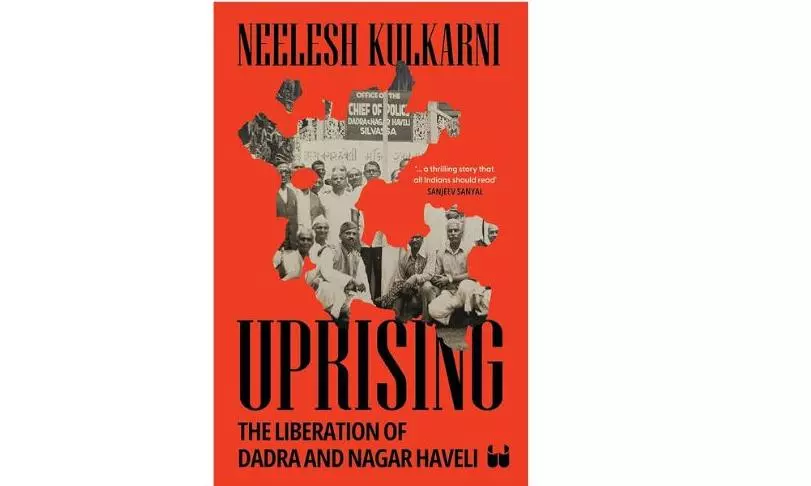Book Review | A lesser-known Independence struggle

Seven years before Krishna Menon, India’s defence at the time, advised Prime Minister Jawaharlal Nehru to annex the Portuguese colonies of Goa, Daman and Diu by force after Portugal had rejected all peaceful negotiations, a number of independent groups of armed resistance activists had eased India’s path by liberating two other lesser-known exclaves, Dadra and Nagar Haveli. This little-known armed struggle is what the author puts before us in detail in his engrossing book.
In the backdrop of the massive struggle for freedom across the entire subcontinent, this brave act seems to have taken a backseat, but Neelesh Kulkarni’s research-based narrative puts it back on record, though one may harbour doubts over certain political assumptions.
One has to start from the premise that the two exclaves Dadra and Nagar Haveli were landlocked (surrounded by Indian territory) and had no presence of any Portuguese military garrison. They only had their police forces, yet, taking over the areas just by agitating groups wasn’t easy, especially with the Indian government realising that diplomacy should precede any such effort and that the Nato should not get involved, Portugal being a member.
The Portuguese, having receded from Bombay to be owners of only Goa, Daman and Diu, also added the 72 villages of Dadra and Nagar Haveli between 1776 and 1783, most of them from the weakening Marathas. It was a sort of compensation from Maratha ruler Peshwa (Prime Minister) Madhav Rao I for Santana, a warship with 120 sailors and 40 cannons that had been captured by the Maratha general Janoji Dhulap in 1772.
The author’s detailed throwback on past incidents leads us to not only understand how Dadra and Nagar Haveli came to be annexed by the Portuguese, but also gives us an insight into the reasons of the weakening of the Marathas.
The Portuguese turned out to be tyrannical rulers, further impoverishing the already hungry locals, and this led to the slow growth of discontent. The story of Prabhakar Sinari, an independence fighter who fled the Portuguese territory, for example, showed that the Satyagraha that worked well against the British wasn’t going to work against the ruthless Portuguese. They had to be paid in their own coin. The villagers themselves (mostly around the town of Silvassa) decided to take matters in their own hands and force a revolution. As news of such hellish treatments of citizens spread beyond the border, resistance groups grew, many in isolation. They included the United Front of Goans, the National Movement Liberation Organisation, the Goa People’s Party (affiliated to communist ideology), the Azad Gomantak Dal and the Communist Party of India, with Godavaribai Parulekar its main action conduit.
It has been said that the movement was hugely supported by the extreme right Rashtriya Swayamsevak Sangh (RSS), but members of the RSS participated in their individual capacities.
The author gets deep into the detailed action plans that the activists had to hatch and the resources they had to find, such as the acquisition of some basic handguns. Money was a massive constraint, and herein came the huge contribution of Lata Mangeshkar — Mangeshi Devi of Goa was family deity of Lata — and even of Mohammed Rafi, which provided the necessary morale booster. The huge jigsaw slowly took shape.
Every bit of history of the country is useful. And this part, though small, remains essential reading for everybody who wants know his/her past. It’s a fine book to add to your collection.
Uprising: The Liberation of Dadra and Nagar Haveli
By Neelesh Kulkarni
Westland
pp. 250; Rs 275
